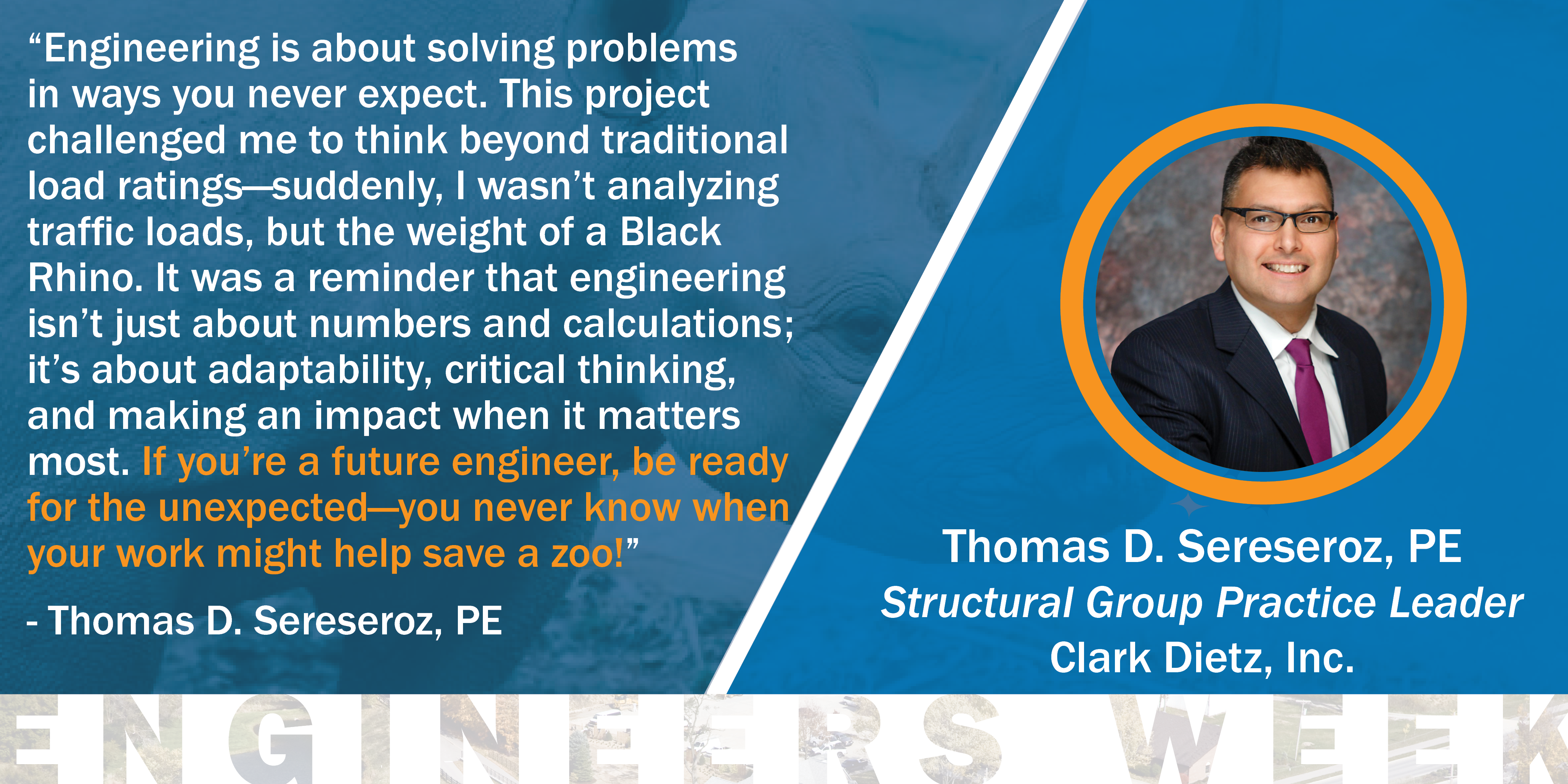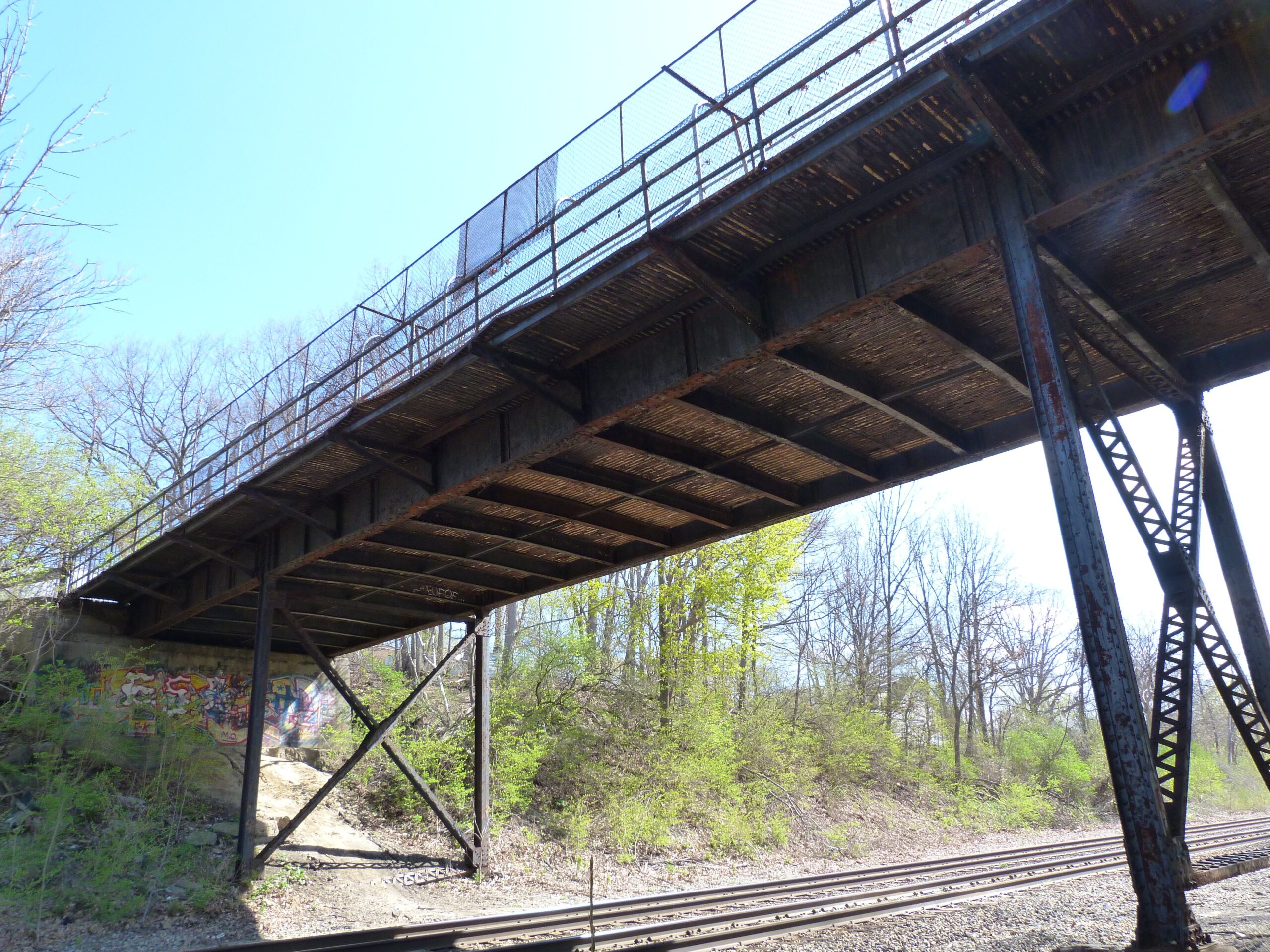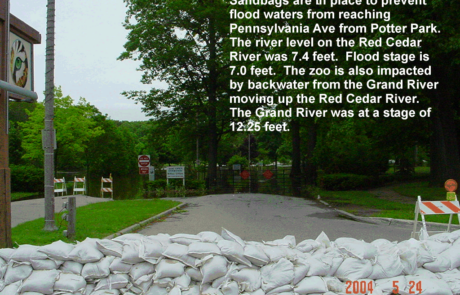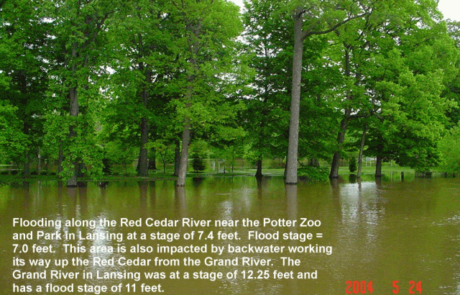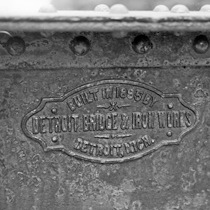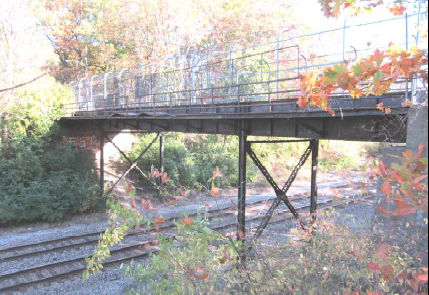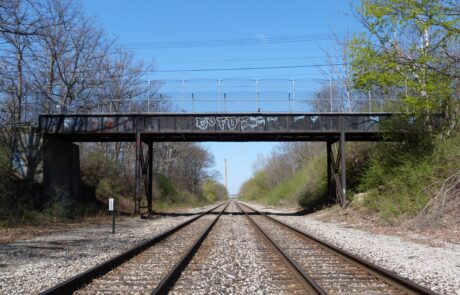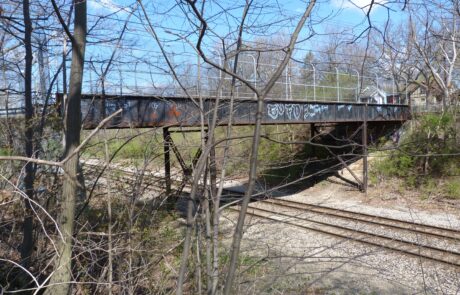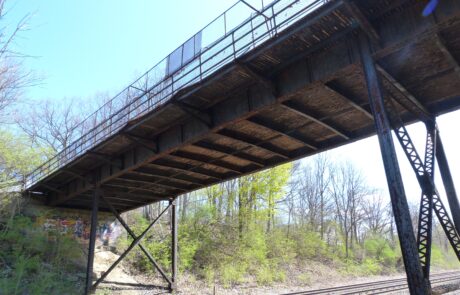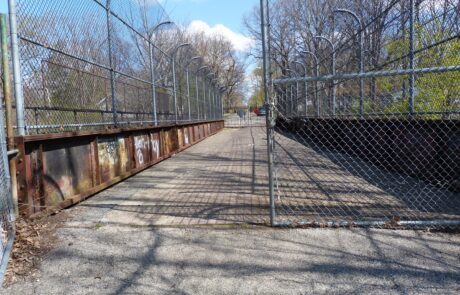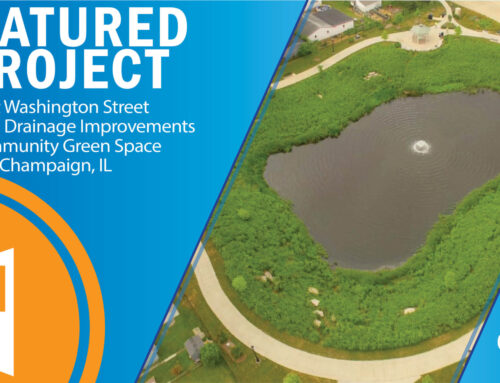A Flooded Entrance and a Critical Decision
In February 2001, the Red Cedar River experienced significant flooding, cresting close to 9 feet. This event led to widespread damage around Lansing’s Potter Park Zoo, rendering the main Pennsylvania Avenue entrance impassable. During this crisis, zoo employees resorted to parking in the northern neighborhood and crossing the closed Dakin Street Bridge to access the zoo.
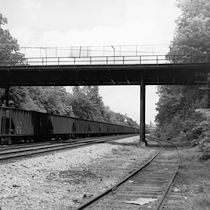
Dakin Rd. Bridge in Lansing, MI
The Dakin Street Bridge: A Historic Structure in Question
Originally constructed in 1886 by the Detroit Bridge and Iron Works, the Dakin Street Bridge was a three-span continuous through plate girder structure and one of Michigan’s oldest highway plate girder bridges. Though it had been closed to traffic for many years due to deterioration, in 2001, it was suddenly reconsidered for a crucial role: a potential emergency evacuation route for the zoo’s animals and staff.
The Engineer Called to the Task
Enter Thomas D. Sereseroz, PE, Clark Dietz’s Structural Group Practice Leader, who at the time was a structural engineer with CTE (later AECOM), who was brought in to conduct an emergency inspection and load rating analysis. His primary challenge was determining if the aging bridge could support the weight of the zoo’s heaviest resident at the time—the Black Rhino—should evacuation become necessary.

Black Rhino, Picture courtesy of Potter Park Zoo
Rapid Inspection Under Tight Constraints
Time was critical. Tom and his team had less than one week to conduct a full assessment. With no existing bridge plans available, they relied on an on-site inspection to collect the necessary structural data. Back in the office, they performed a finite element analysis using STAAD Pro software, incorporating the weight of the rhino and the transport vehicle into their calculations.
Engineering for an Unusual Load: A Black Rhino
The Dakin Street Bridge consists of three spans with continuous steel plate girders supported by steel bent piers and concrete abutments. Over the years, the plate girders and steel piers suffered from pack rusting, but still retained enough remaining steel to support non-repetitive live loading. The concrete abutments showed signs of cracking and spalling, yet retained sufficient strength to support non-repetitive live loading. The cantilevered sidewalk, supported by steel knee braces off the steel plate fascia beams, was determined to be structurally unsound for supporting any live loads. After conducting an analysis and load rating of the bridge, it was determined that a 7-ton live load weight restriction would be implemented. This restriction would apply during emergency evacuations of the Potter Park Zoo animals and would allow for the safe crossing of a zoo truck and trailer fully loaded with a 3,000-pound black rhino.

Dakin St. Bridge, 2011 photo courtesy of Historicbridges.org
Although the analysis uncovered minor deterioration, ultimately, the bridge was deemed safe for the emergency—under the condition that animals would be transported one at a time. This conclusion was vital, providing a much-needed contingency plan should the flooding worsen. Reflecting on the project, Tom remarked, “We have AASHTO load ratings for vehicles and pedestrians, but not animals.” This unique challenge pushed him to think beyond standard engineering applications.
A Lifelong Passion for Problem-Solving
Tom’s interest in engineering started in high school, where he initially explored architecture. His turning point came during a physics project, where he built an arched dome out of soaked wood, calculated its load-bearing capacity, and presented with a load testing demonstration at a science fair. Inspired by that and his uncle—who was an engineer at Goodyear who designed a prosthetic fin for a dolphin—Tom pursued a career in structural engineering.
Engineering Challenges Continue
Now serving as the Structural Group Practice Leader at Clark Dietz, Tom applies his expertise to a diverse range of projects. He holds both Bachelor’s and Master’s degrees in Civil Engineering from Michigan State University and is a registered Professional Engineer in Michigan and Minnesota.
A Bridge’s Legacy in Emergency Response
The Dakin Street Bridge, once an integral connection to the zoo, was ultimately removed in 2017 due to high maintenance costs and safety concerns. However, its role in the 2001 flooding crisis and flooding in subsequent years, underscores the crucial role of engineers in emergency response—ensuring safety, problem-solving under pressure, and making real-world impacts when it matters most.
 A huge thank you to HistoricBridges.org for photos of the Dakin St. Bridge. Interested in seeing more photos, check out their site – https://historicbridges.org/
A huge thank you to HistoricBridges.org for photos of the Dakin St. Bridge. Interested in seeing more photos, check out their site – https://historicbridges.org/



